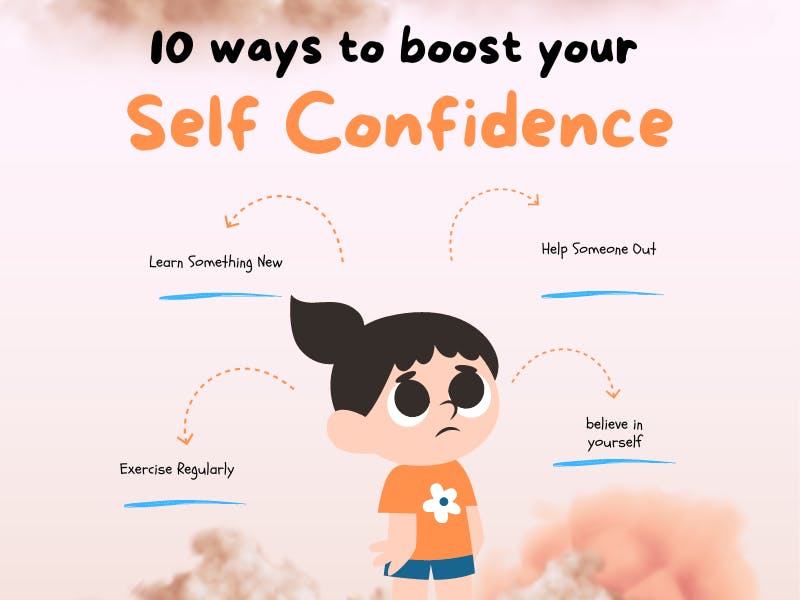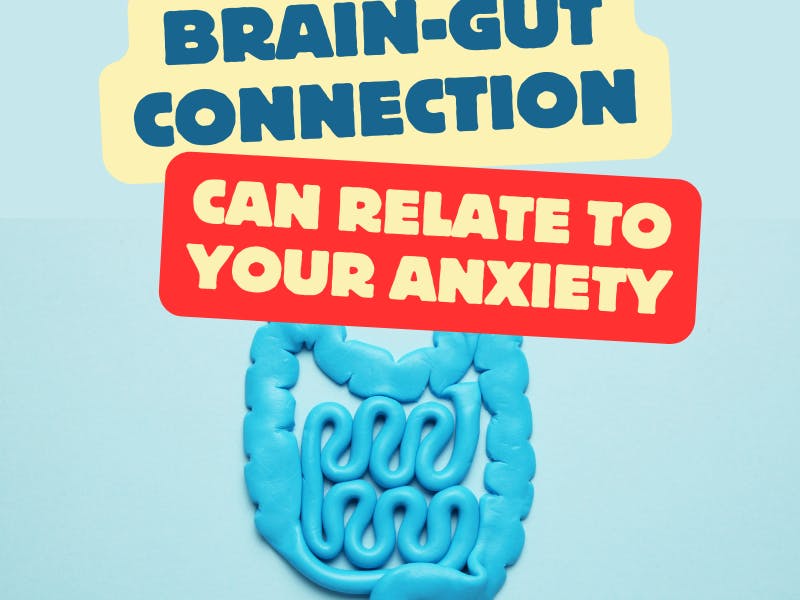
How to manage panic attacks - 10 tips
Apr 3, 2024
Introduction:
Panic attacks can be incredibly distressing and debilitating experiences. They are intense episodes of overwhelming fear and anxiety that can strike suddenly, without any apparent reason. During a panic attack, individuals may experience a variety of physical symptoms such as rapid heartbeat, shortness of breath, chest pain, dizziness, sweating, and trembling. Alongside these physical symptoms, panic attacks also produce a strong sense of impending doom or a fear of losing control or going crazy.
Panic attacks affect a significant portion of the population and can have a profound impact on a person's quality of life. They can disrupt daily routines, relationships, and overall well-being. It is therefore crucial to learn effective strategies to manage and cope with panic attacks. By implementing appropriate techniques and seeking support, individuals can regain a sense of control and reduce the frequency and intensity of panic attacks.
In this comprehensive guide, we will delve into 15 tips that can help individuals manage panic attacks. From understanding the causes and symptoms of panic attacks to incorporating relaxation techniques, grounding exercises, and lifestyle changes, this guide aims to provide a holistic approach to managing panic attacks. By following these tips, individuals can develop coping mechanisms that work best for them and regain a sense of stability and calmness in their lives.
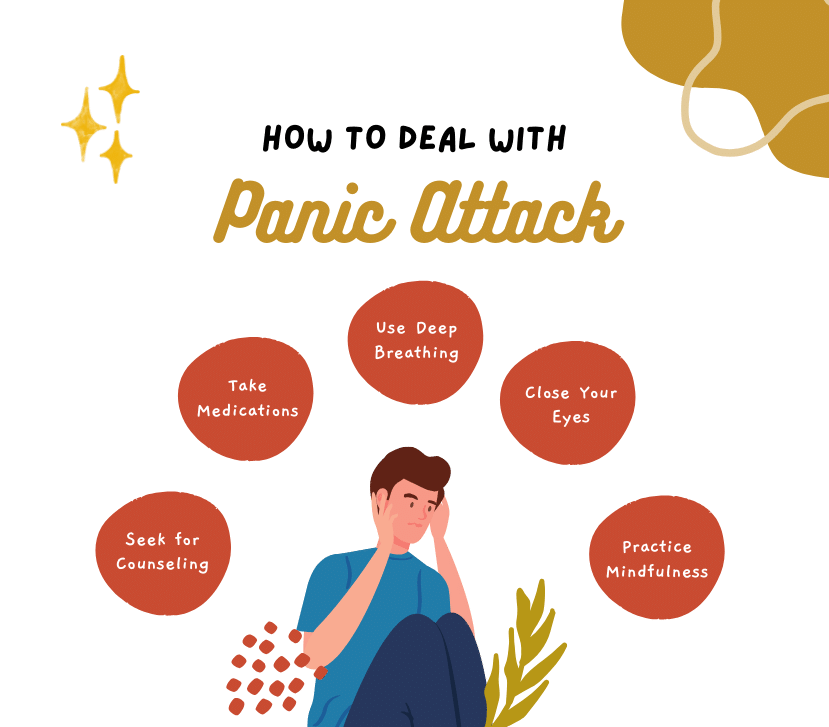
II. Understanding Panic Attacks
To effectively manage panic attacks, it is important to gain a deeper understanding of what causes them and how they manifest. Panic attacks typically arise from a combination of biological, psychological, and environmental factors. While the exact cause of panic attacks is not fully understood, several contributing factors have been identified.
Biologically, panic attacks are believed to result from an overactive fight-or-flight response, which is the body's natural response to perceived threats. During a panic attack, this response is triggered even when there is no real danger present. This can be influenced by genetic factors, imbalances in neurotransmitters (such as serotonin and norepinephrine), and alterations in brain circuitry involved in fear and anxiety.
Psychologically, panic attacks can be triggered by certain thought patterns and beliefs. Catastrophic thinking, which involves anticipating the worst-case scenario, can exacerbate anxiety and contribute to the onset of panic attacks. Additionally, individuals who have experienced traumatic events or have a history of anxiety disorders may be more prone to panic attacks.
Environmental factors can also play a role in triggering panic attacks. Stressful life events, such as the loss of a loved one, job-related stress, or major life changes, can increase vulnerability to panic attacks. Certain situations or environments that have been associated with past panic attacks may also act as triggers.
Recognizing the symptoms of panic attacks is crucial for proper diagnosis and management. Common symptoms include a rapid heartbeat, chest pain or discomfort, shortness of breath, dizziness or lightheadedness, sweating, trembling or shaking, a sense of impending doom, and a fear of losing control or going crazy. These symptoms can be mistaken for other medical conditions, such as heart problems, so it is important to consult a healthcare professional to rule out any underlying physical causes.
It is also important to differentiate panic attacks from other anxiety disorders, such as generalized anxiety disorder or social anxiety disorder. While anxiety disorders involve persistent worry and fear in various situations, panic attacks are discrete episodes of intense fear that typically last for a relatively short duration, usually reaching their peak within a few minutes.
Understanding the impact of panic attacks on daily life is crucial for individuals who experience them. Panic attacks can lead to avoidance behaviors, where individuals actively avoid situations or places that they associate with previous panic attacks. This can severely limit their ability to engage in activities they enjoy or carry out everyday tasks. The fear of having a panic attack in public can also result in social isolation and a diminished quality of life.
By gaining a comprehensive understanding of panic attacks, individuals can begin to develop effective strategies to manage and overcome them. The following tips will provide guidance on how to navigate through panic attacks and regain control over one's life.
Tip 1: Educate Yourself about Panic Attacks
One of the first steps in managing panic attacks is to educate yourself about the condition. By understanding the physiology and psychology of panic attacks, you can gain valuable insights that can help you navigate through them more effectively.
Start by learning about the underlying causes of panic attacks. As mentioned earlier, panic attacks are often triggered by an overactive fight-or-flight response. This physiological response is designed to protect us from danger, but in the case of panic attacks, it becomes activated in situations that are not actually threatening. By understanding the biological mechanisms behind panic attacks, you can begin to recognize that these episodes are not inherently dangerous and can be managed.
Next, familiarize yourself with the common triggers and warning signs of panic attacks. Triggers can vary from person to person, but they may include specific situations, places, or even thoughts that evoke fear or anxiety. By identifying your personal triggers, you can take proactive steps to avoid or manage them. Additionally, recognizing the warning signs that precede a panic attack, such as increased heart rate or shallow breathing, can help you intervene early and prevent the attack from escalating.
Seeking professional help and resources is also crucial in educating yourself about panic attacks. Consult with a mental health professional who specializes in anxiety disorders to gain personalized insights and guidance. They can provide you with a wealth of information, strategies, and coping techniques that are tailored to your specific needs. Additionally, consider attending support groups or workshops focused on anxiety and panic disorders. These forums can provide a safe space to share experiences, learn from others, and gain a sense of community.
Online resources, such as reputable websites, books, and articles, can also be valuable sources of information. Look for resources that are evidence-based and written by experts in the field. These resources can provide you with additional tips, coping strategies, and practical advice for managing panic attacks.
By educating yourself about panic attacks, you empower yourself with knowledge and understanding. This knowledge can help demystify the experience of panic attacks and reduce the fear and anxiety associated with them. With a solid foundation of knowledge, you can then move forward to implementing various techniques and strategies to effectively manage panic attacks.
Tip 2: Practice Deep Breathing Techniques
Deep breathing techniques are simple yet powerful tools that can help regulate your breathing and calm your body during a panic attack. When panic strikes, your breathing tends to become rapid and shallow, which can exacerbate the physical symptoms of panic. By practicing deep breathing, you can counteract this response and induce a relaxation response in your body.
To practice deep breathing, find a comfortable and quiet place where you can sit or lie down. Close your eyes and focus on your breath. Take a slow, deep breath in through your nose, allowing your abdomen to rise as you fill your lungs with air. Hold your breath for a moment, and then exhale slowly through your mouth, allowing your abdomen to fall as you release the air. Repeat this deep breathing pattern for several minutes, focusing on the sensation of your breath and the rise and fall of your abdomen.
Deep breathing helps activate the body's relaxation response by stimulating the parasympathetic nervous system. This system counteracts the fight-or-flight response and promotes a state of calm and relaxation. By taking slow, deep breaths, you send a signal to your body that you are safe and not in immediate danger, helping to alleviate the physical symptoms of panic.
Incorporating deep breathing techniques into your daily routine can also be beneficial for managing overall anxiety levels. By practicing deep breathing regularly, you can train your body to respond more calmly in stressful situations, reducing the likelihood of panic attacks. Consider setting aside a few minutes each day for deep breathing exercises, or incorporate them into other activities such as meditation or yoga.
To enhance the effectiveness of deep breathing, you can also try incorporating visualizations or affirmations. Imagine yourself in a peaceful and calming environment, such as a serene beach or a tranquil forest. As you breathe in, visualize yourself inhaling positive energy and exhaling any tension or anxiety. You can also repeat affirmations, such as "I am calm and in control," to reinforce a sense of calmness and empowerment.
Remember, deep breathing is a technique that requires practice and patience. It may take time to fully experience the benefits, but with consistent practice, deep breathing can become a valuable tool in managing panic attacks and promoting overall well-being.
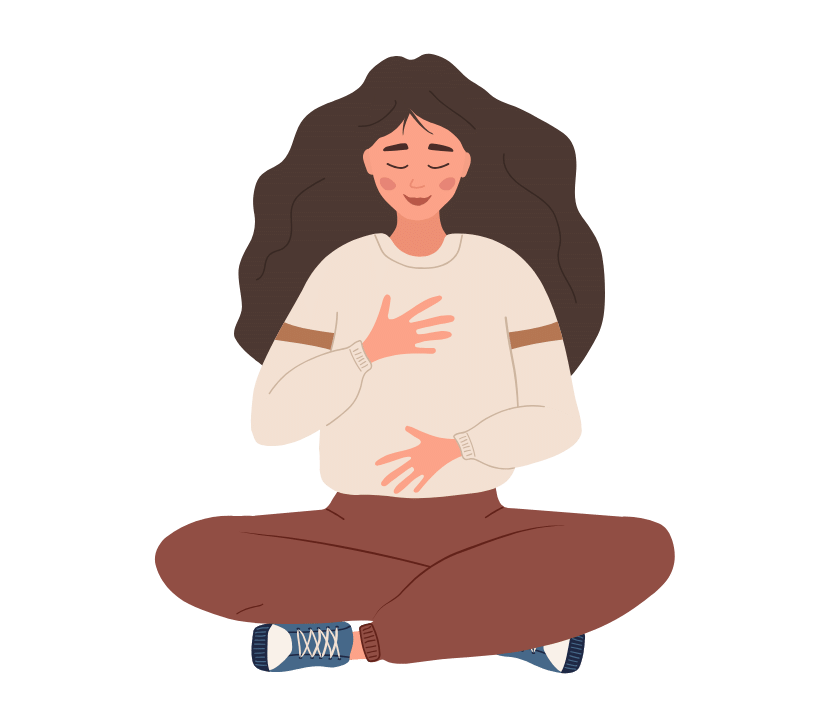
Tip 3: Practice Grounding Techniques
Grounding techniques are effective strategies that can help individuals experiencing a panic attack regain a sense of stability and connection to the present moment. When panic strikes, it is common to feel disconnected from reality or overwhelmed by intense emotions. Grounding techniques can help redirect your focus away from the panic and into the present, allowing you to regain control over your thoughts and emotions.
One grounding technique is the 5-4-3-2-1 method. Start by identifying five things you can see around you. Take a moment to observe their colors, shapes, and textures. Next, identify four things you can touch. Pay attention to the sensation of touch, whether it's the texture of an object or the feeling of your feet on the ground. Then, identify three things you can hear, such as the sound of birds chirping or the hum of a fan. After that, identify two things you can smell, whether it's the scent of fresh air or a familiar fragrance. Finally, identify one thing you can taste, such as a mint or a sip of water. This technique helps shift your focus from internal anxiety to external sensory experiences, grounding you in the present moment.
Another grounding technique is deep muscle relaxation. Start by sitting or lying down in a comfortable position. Begin by tensing the muscles in your feet and then slowly releasing the tension, allowing them to relax completely. Gradually move up your body, tensing and releasing each muscle group, including your legs, abdomen, arms, shoulders, and face. Pay attention to the sensations of tension and relaxation in each muscle group. This technique promotes a deep sense of relaxation and can help alleviate physical symptoms of panic.
Engaging your senses is another effective grounding technique. Find an object with an interesting texture, such as a smooth stone or a soft piece of fabric. Focus all your attention on the sensation of touch as you explore the object. Alternatively, you can engage your sense of smell by using essential oils or scented candles with calming aromas. Inhale deeply and focus on the scent, allowing it to soothe your senses. Engaging your senses helps redirect your focus away from anxious thoughts and into the present moment.
Incorporating grounding techniques into your daily routine can help reduce anxiety levels overall, making panic attacks less likely to occur. Practice these techniques regularly, even when you are not experiencing a panic attack, to familiarize yourself with them and reinforce their effectiveness. Experiment with different grounding techniques to find the ones that resonate with you the most and incorporate them into your personalized coping toolbox.
By practicing grounding techniques, you can cultivate a sense of mindfulness and presence, helping you navigate through panic attacks with greater ease and resilience. These techniques provide a tangible anchor in the midst of chaos, allowing you to regain control over your thoughts and emotions.
Tip 4: Challenge Negative Thoughts and Catastrophic Thinking
Negative thoughts and catastrophic thinking often accompany panic attacks and can intensify feelings of fear and anxiety. It is important to recognize and challenge these thoughts in order to manage panic attacks more effectively. By challenging negative thoughts, you can gain a more balanced perspective and reduce the intensity of panic.
Start by becoming aware of the negative thoughts that arise during a panic attack. These thoughts may include beliefs such as "I'm going to die," "I can't handle this," or "Something terrible is going to happen." Write down these thoughts as they occur, noting any patterns or recurring themes.
Next, evaluate the evidence for and against these negative thoughts. Ask yourself: What is the likelihood that this thought is true? Is there any evidence that contradicts this thought? Often, you will find that these negative thoughts are based on irrational fears and are not supported by evidence or facts.
Challenge your negative thoughts by considering alternative, more realistic interpretations. For example, if your negative thought is "I'm going to have a heart attack," consider alternative thoughts such as "I have experienced panic attacks before and have not had a heart attack. This feeling will pass." By reframing your thoughts in a more rational and balanced manner, you can reduce the intensity of panic.
Another effective strategy is to replace negative thoughts with positive and affirming statements. Create a list of positive affirmations or coping statements that resonate with you. For example, "I am strong and capable of managing my anxiety," or "I have successfully overcome panic attacks in the past, and I can do it again." Repeat these statements to yourself during a panic attack, focusing on the strength and resilience they instill.
It can also be helpful to seek support from a mental health professional or therapist who specializes in anxiety disorders. They can help you identify and challenge negative thoughts, providing guidance and strategies for reframing them. Cognitive-behavioral therapy (CBT) is a commonly used therapeutic approach that can be particularly effective in addressing negative thought patterns associated with panic attacks.
Remember, challenging negative thoughts takes practice and patience. It is a skill that can be developed over time with consistent effort. By actively challenging and reframing negative thoughts, you can regain control over your thinking patterns and reduce the impact of panic attacks on your overall well-being.

Tip 5: Establish a Self-Care Routine
Establishing a self-care routine is an essential component of managing panic attacks and promoting overall mental well-being. Taking care of yourself physically, emotionally, and mentally can help reduce stress levels and increase resilience, making it easier to cope with and prevent panic attacks.
Start by prioritizing sleep. Getting enough restful sleep is crucial for maintaining mental and emotional balance. Aim for a consistent sleep schedule and create a relaxing bedtime routine. Engage in activities that promote relaxation, such as reading, taking a warm bath, or practicing meditation, to prepare your mind and body for a good night's sleep.
Regular physical exercise is also important for managing anxiety and panic attacks. Engaging in physical activity releases endorphins, which are natural mood boosters. Find an exercise routine that you enjoy, whether it's walking, yoga, dancing, or any other form of movement. Aim for at least 30 minutes of moderate exercise most days of the week.
Incorporate stress-reducing activities into your daily routine. This can include practices such as meditation, deep breathing exercises, or engaging in hobbies that bring you joy and relaxation. Find activities that help you unwind and recharge, whether it's spending time in nature, journaling, listening to music, or practicing mindfulness. Experiment with different activities to discover what works best for you.
Maintaining a healthy and balanced diet can also contribute to managing panic attacks. Aim to eat a variety of nutritious foods, including fruits, vegetables, whole grains, lean proteins, and healthy fats. Avoid or limit the consumption of caffeine, alcohol, and processed foods, as they can contribute to anxiety and increase the likelihood of panic attacks.
In addition to physical self-care, nurturing your emotional well-being is equally important. Surround yourself with a supportive network of friends and loved ones who understand and respect your experiences. Reach out to them for support during challenging times. Consider joining support groups or seeking therapy to connect with individuals who have similar experiences and can provide additional guidance and encouragement.
Lastly, practice self-compassion and be gentle with yourself. Remember that managing panic attacks takes time and effort. Acknowledge your progress and celebrate your successes, no matter how small they may seem. Treat yourself with kindness and understanding, and avoid self-judgment or self-criticism.
By establishing a self-care routine, you are proactively investing in your mental and emotional well-being. Taking care of yourself holistically can help reduce stress, increase resilience, and provide a solid foundation for managing panic attacks. Remember, self-care is not selfish, but rather a necessary step towards living a balanced and fulfilling life.
Tip 6: Implement Relaxation Techniques
Relaxation techniques can be powerful tools in managing and reducing the intensity of panic attacks. By incorporating these techniques into your daily routine, you can cultivate a sense of calm and help prevent panic attacks from occurring or escalating. Here are some effective relaxation techniques to consider:
- Deep Breathing: Deep breathing exercises can help activate the body's relaxation response, promoting a sense of calm. Practice diaphragmatic breathing by inhaling deeply through your nose, allowing your belly to rise, and exhaling slowly through your mouth. Focus on the sensation of your breath, and repeat this exercise several times.
- Progressive Muscle Relaxation (PMR): PMR involves systematically tensing and then releasing different muscle groups to induce physical relaxation. Start by tensing and then relaxing your toes, gradually working your way up to your head and neck. This technique can help release tension and promote a relaxed state.
- Guided Imagery: Guided imagery involves visualizing calming and peaceful scenes or experiences. Close your eyes, imagine yourself in a serene location, and engage your senses by vividly imagining the sights, sounds, and smells of that environment. This technique can help divert your attention away from panic and create a sense of relaxation.
- Mindfulness Meditation: Mindfulness meditation involves bringing your attention to the present moment, observing your thoughts and sensations without judgment. Practice focusing on your breath, sensations in your body, or sounds around you. Regular mindfulness meditation can increase your ability to stay present and reduce anxiety.
- Yoga or Tai Chi: Engaging in gentle, flowing movements through yoga or tai chi can help relax both the body and mind. These practices incorporate deep breathing, stretching, and mindfulness, promoting a sense of balance and relaxation.
- Aromatherapy: Certain scents, such as lavender or chamomile, are known for their calming properties. Use essential oils, candles, or diffusers to introduce these scents into your environment and create a soothing atmosphere.
Remember, finding the relaxation technique that works best for you may require some experimentation. Explore different techniques and practices to discover what resonates with you and brings the most relief. Incorporate these techniques into your daily routine, not just during panic attacks, to build resilience and maintain a sense of calm and balance.
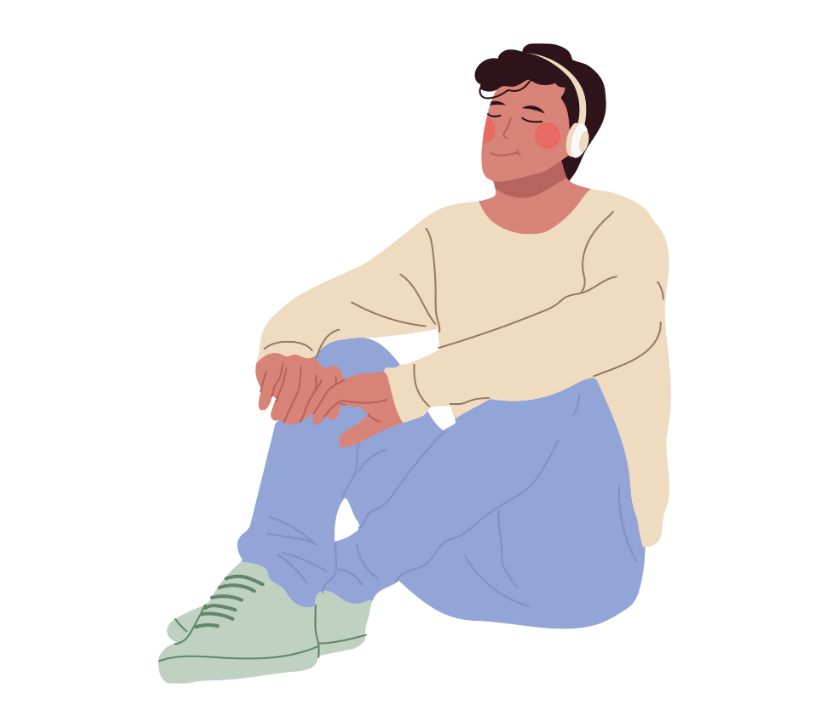
Tip 7: Establish a Healthy Lifestyle
Establishing a healthy lifestyle is an important aspect of managing panic attacks and promoting overall well-being. Making positive changes to your daily habits can have a significant impact on your mental and physical health. Here are some key areas to focus on when establishing a healthy lifestyle:
- Prioritize Sleep: Getting enough restful sleep is crucial for managing anxiety and preventing panic attacks. Aim for a consistent sleep schedule and create a relaxing bedtime routine. Avoid stimulating activities before bed and create a comfortable sleep environment that promotes restfulness.
- Eat a Balanced Diet: Nourishing your body with a balanced diet can help stabilize your mood and energy levels. Include a variety of fruits, vegetables, whole grains, lean proteins, and healthy fats in your meals. Limit your intake of processed foods, sugary snacks, and caffeine, as they can contribute to anxiety and trigger panic attacks.
- Engage in Regular Exercise: Regular physical exercise is a natural stress reliever and mood booster. Find activities that you enjoy and make them a regular part of your routine. Aim for at least 30 minutes of moderate exercise most days of the week. It can be as simple as going for a walk, dancing, swimming, or practicing yoga.
- Manage Stress: Chronic stress can worsen anxiety and increase the likelihood of panic attacks. Find healthy ways to manage and reduce stress in your life. This can include practices such as meditation, deep breathing exercises, journaling, engaging in hobbies, or spending time in nature. Explore different stress-reducing activities and incorporate them into your daily routine.
- Limit Alcohol and Substance Use: Alcohol and certain substances can exacerbate anxiety and trigger panic attacks. Limit your consumption of alcohol, avoid recreational drug use, and be mindful of any medications that may have anxiety-inducing side effects. If you have concerns about substance use, seek professional help and support.
- Maintain a Supportive Social Network: Surround yourself with a supportive network of friends and loved ones who understand and respect your experiences. Engage in meaningful social connections and seek support when needed. Joining support groups or seeking therapy can also provide additional guidance and encouragement.
By establishing a healthy lifestyle, you are nurturing your physical and mental well-being, which can help reduce the frequency and intensity of panic attacks. Remember, it's important to make gradual changes and focus on progress rather than perfection. Incorporate these healthy habits into your daily routine and be patient with yourself as you work towards a balanced and fulfilling lifestyle.

Tip 8: Practice Mindfulness and Meditation
Mindfulness and meditation are powerful practices that can greatly benefit those who experience panic attacks. By cultivating a present-moment awareness and developing a non-judgmental attitude towards your thoughts and sensations, mindfulness and meditation can help reduce anxiety, promote relaxation, and increase overall well-being. Here are some tips to incorporate mindfulness and meditation into your life:
- Start with Short Sessions: Begin with short meditation sessions, such as 5-10 minutes, and gradually increase the duration as you become more comfortable. Consistency is more important than duration, so aim to practice daily, even if it's for a brief period.
- Find a Quiet Space: Choose a quiet and comfortable space where you can practice without distractions. This can be a designated meditation corner in your home or even a peaceful spot in nature. Create an environment that promotes relaxation and tranquility.
- Focus on Your Breath: Use the breath as an anchor for your attention. Pay attention to the sensations of the breath as you inhale and exhale. If your mind wanders, gently bring your attention back to the breath without judgment.
- Explore Guided Meditations: Guided meditations can be helpful, especially for beginners. There are numerous apps and websites that offer guided meditation sessions tailored to anxiety and panic attacks. These can provide structure and guidance as you cultivate your meditation practice.
- Practice Body Scan Meditation: Body scan meditation involves systematically bringing your attention to different parts of your body, noticing any sensations or tension. This practice helps develop body awareness and promotes relaxation. Start from the top of your head and slowly move down to your toes, focusing on each body part.
- Embrace Mindful Living: Extend mindfulness beyond formal meditation sessions and bring it into your daily life. Practice being fully present in everyday activities, such as eating, walking, or washing dishes. Engage your senses and notice the details of each experience.
- Be Kind to Yourself: Approach your meditation practice with a compassionate and non-judgmental attitude. Acknowledge that thoughts and distractions are a natural part of the process. Be patient with yourself and let go of any expectations or self-criticism.
Remember that mindfulness and meditation are skills that develop over time with regular practice. Be open to exploring different techniques and finding what resonates with you. As you incorporate these practices into your life, you may find that you are better able to manage panic attacks, increase self-awareness, and cultivate a greater sense of peace and calmness.
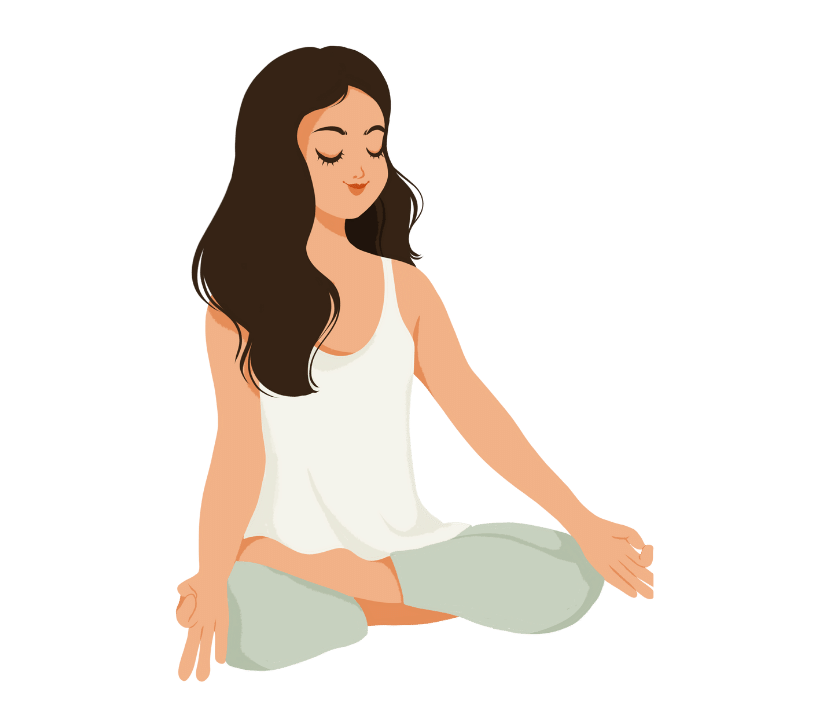
Tip 9: Develop a Support Network
Building a strong support network is crucial for managing panic attacks and maintaining overall mental well-being. Having individuals who understand and support you can provide comfort, encouragement, and a sense of belonging. Here are some suggestions for developing a support network:
- Reach Out to Loved Ones: Start by confiding in friends, family members, or trusted individuals about your experiences with panic attacks. Share your feelings, concerns, and any specific needs you have. Opening up to loved ones can foster understanding and empathy, and they may be able to offer support or accompany you during challenging times.
- Join Support Groups: Consider joining local or online support groups specifically dedicated to anxiety disorders or panic attacks. These groups provide a safe space to connect with others who share similar experiences. Sharing your journey, listening to others' stories, and receiving advice can be immensely helpful in navigating through panic attacks.
- Seek Professional Help: Consult with mental health professionals, such as therapists, counselors, or psychiatrists, who specialize in anxiety disorders. They can provide guidance, therapeutic interventions, and tools to manage panic attacks effectively. Therapy sessions can also serve as a supportive environment to discuss your experiences and emotions.
- Online Communities: Engage in online communities and forums where individuals with panic attacks or anxiety disorders gather to share their stories and insights. Platforms such as Reddit, HealthUnlocked, or dedicated Facebook groups can provide a sense of community, information, and emotional support.
- Attend Workshops or Classes: Look for workshops or classes that focus on anxiety management, stress reduction, or mindfulness. These settings allow you to connect with others who are also working towards managing panic attacks. Participating in group activities can provide a sense of camaraderie and support.
- Consider Therapy Animals: Therapy animals, such as dogs or cats, can offer emotional support and provide a calming presence during panic attacks. They have been shown to reduce anxiety and improve overall well-being. Consult with professionals or organizations specializing in therapy animals to explore this option.
Remember, developing a support network takes time and effort. Be patient with yourself and understand that not everyone will fully understand your experience. Surround yourself with individuals who are compassionate, non-judgmental, and willing to learn about panic attacks. Together, you can navigate through difficult times, celebrate achievements, and support each other's well-being.
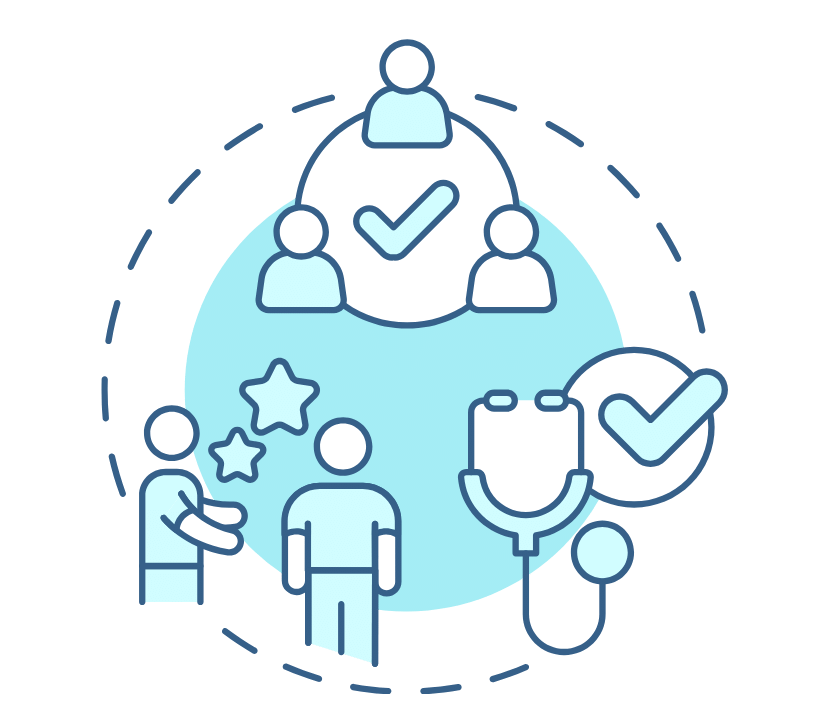
Tip 10: Seek Professional Help
If you are struggling with panic attacks, it is important to seek professional help. While self-help strategies can be effective, a mental health professional can provide specialized guidance and support tailored to your specific needs. They can help you develop a comprehensive treatment plan and offer evidence-based techniques to manage and reduce the frequency and intensity of panic attacks.
Consider reaching out to a licensed therapist or psychologist who specializes in anxiety disorders or panic attacks. They can provide a safe and nonjudgmental space for you to explore your experiences, emotions, and triggers. Through therapy, you can gain a deeper understanding of the underlying causes of your panic attacks and learn effective coping strategies.
Cognitive-behavioral therapy (CBT) is a common therapeutic approach used to treat panic attacks. CBT focuses on identifying and challenging negative thought patterns and behaviors that contribute to panic attacks. Through CBT, you can learn to reframe negative thoughts, develop healthier coping mechanisms, and gradually expose yourself to the situations or triggers that provoke panic attacks.
In some cases, medication may be prescribed to help manage panic attacks. Antidepressants and anti-anxiety medications can be helpful in reducing the frequency and severity of panic attacks. A psychiatrist or primary care physician can assess your symptoms and determine if medication is appropriate for your situation. It is important to note that medication should be used in conjunction with therapy and under the guidance of a healthcare professional.
In addition to therapy and medication, other treatment options may include relaxation techniques, such as biofeedback or mindfulness-based stress reduction. These techniques can help you develop a greater sense of control over your body's physical responses to anxiety and panic. Alternative therapies, such as acupuncture or yoga, may also be beneficial in managing stress and promoting overall well-being.
Remember that seeking professional help is a sign of strength, not weakness. It takes courage to reach out and ask for support. A mental health professional can provide the guidance, tools, and resources necessary to help you manage panic attacks and regain control over your life.
In conclusion, seeking professional help is an important step in managing panic attacks. A mental health professional can provide you with the necessary support, guidance, and treatment options to help you effectively manage and reduce the impact of panic attacks on your life. Remember, you don't have to face panic attacks alone, and there is help available to support you on your journey towards recovery.
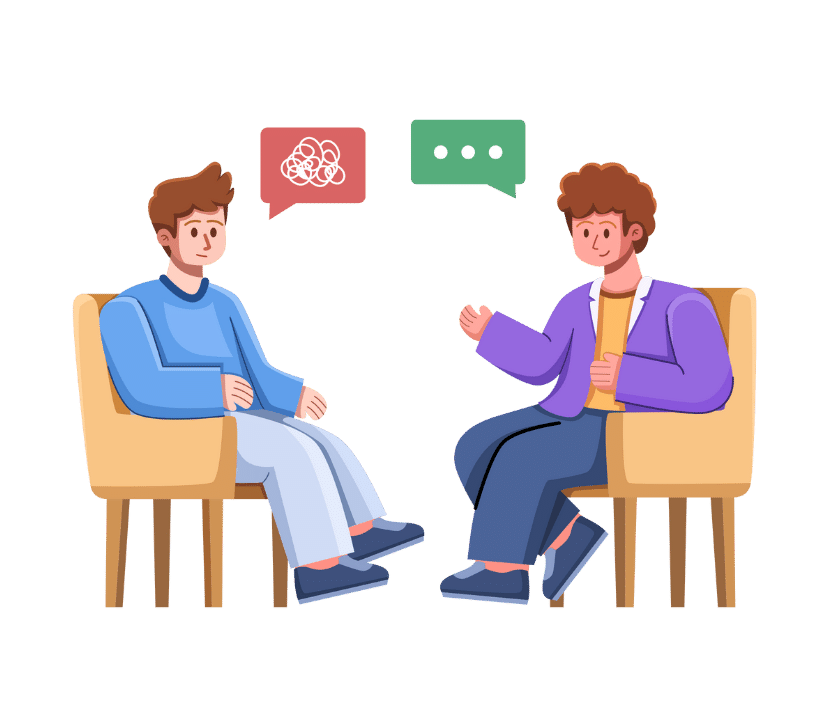
Conclusion
In conclusion, managing panic attacks requires a holistic approach that encompasses various strategies and techniques. By implementing the tips and strategies discussed in this guide, such as understanding panic attacks, seeking professional help, implementing relaxation techniques, establishing a healthy lifestyle, practicing mindfulness and meditation, and developing a support network, you can take proactive steps towards managing and reducing the impact of panic attacks in your life.
It is important to remember that everyone's experience with panic attacks is unique, and what works for one person may not work for another. It may take time and experimentation to find the strategies that work best for you. Be patient with yourself and seek professional guidance as needed.
Managing panic attacks is a journey, and it is important to be kind to yourself along the way. Celebrate your progress, no matter how small, and acknowledge that setbacks may occur. With persistence, support, and a commitment to self-care, you can regain control over your life and find relief from panic attacks. Remember, you are not alone, and there are resources available to support you on your journey to managing and overcoming panic attacks.
References
- Anxiety and Depression Association of America (ADAA): www.adaa.org
- National Institute of Mental Health (NIMH): www.nimh.nih.gov
- Mayo Clinic: www.mayoclinic.org
- American Psychological Association (APA): www.apa.org
- National Alliance on Mental Illness (NAMI): www.nami.org
